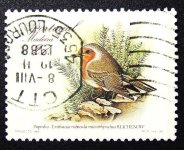RockyRacoon
Well-known member
Hi all, just got back from Tenerife a few days ago, to post my final report I need to know if the following are sub species of a separate species!
O.K, here goes!
Tenerife Blue tit
Canary Island Chffichaff
Canary island Goldcrest!
Please help!
O.K, here goes!
Tenerife Blue tit
Canary Island Chffichaff
Canary island Goldcrest!
Please help!





